Beef Bone Marrow
Beef Bone Marrow
carnivoro®
Beef Bone Marrow
Beef Bone Marrow
carnivoro®
100% grass-fed
Pasture-raised
Unvaccinated cattle
- 200g grass-fed organic bone marrow
- Raised on 100% grass & herbs and 0% grain
- Free of growth hormones, antibiotics and pesticides
- Gone processed to get the best possible nutritional profile
- Completely free of allergens
Couldn't load pickup availability
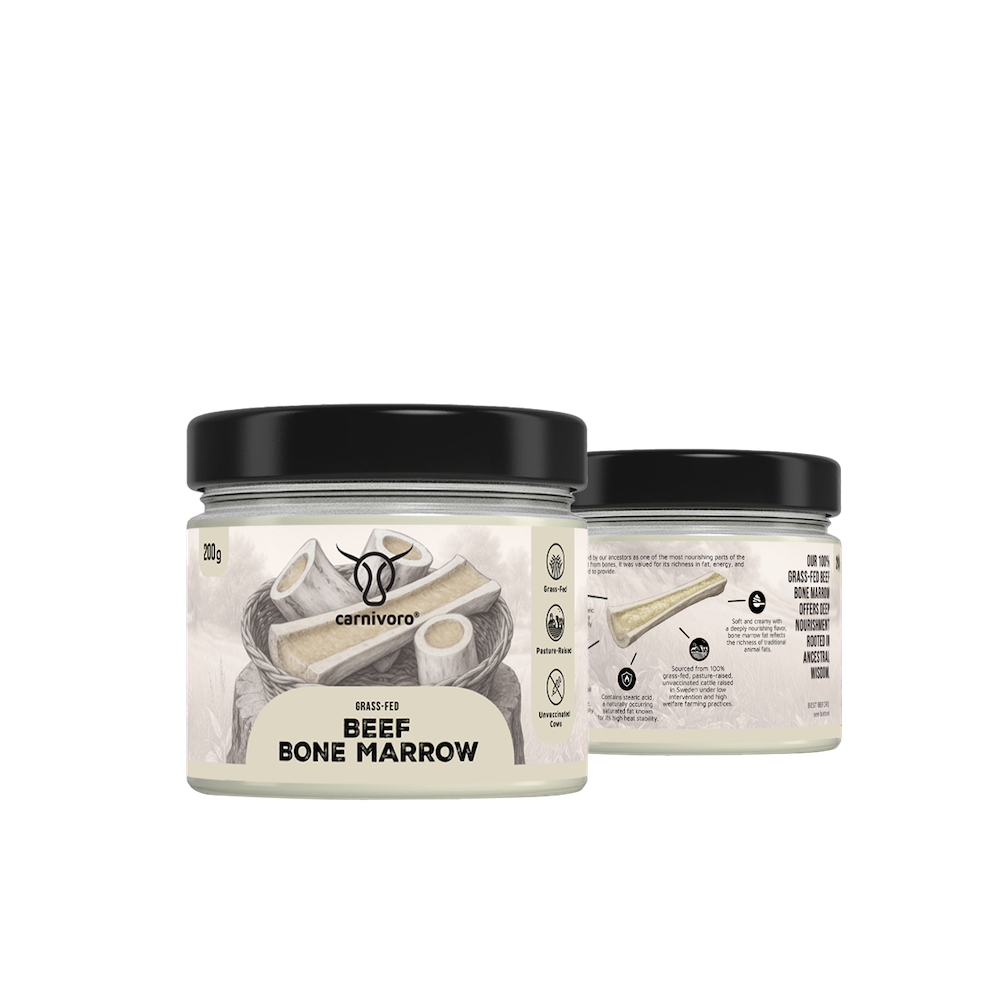
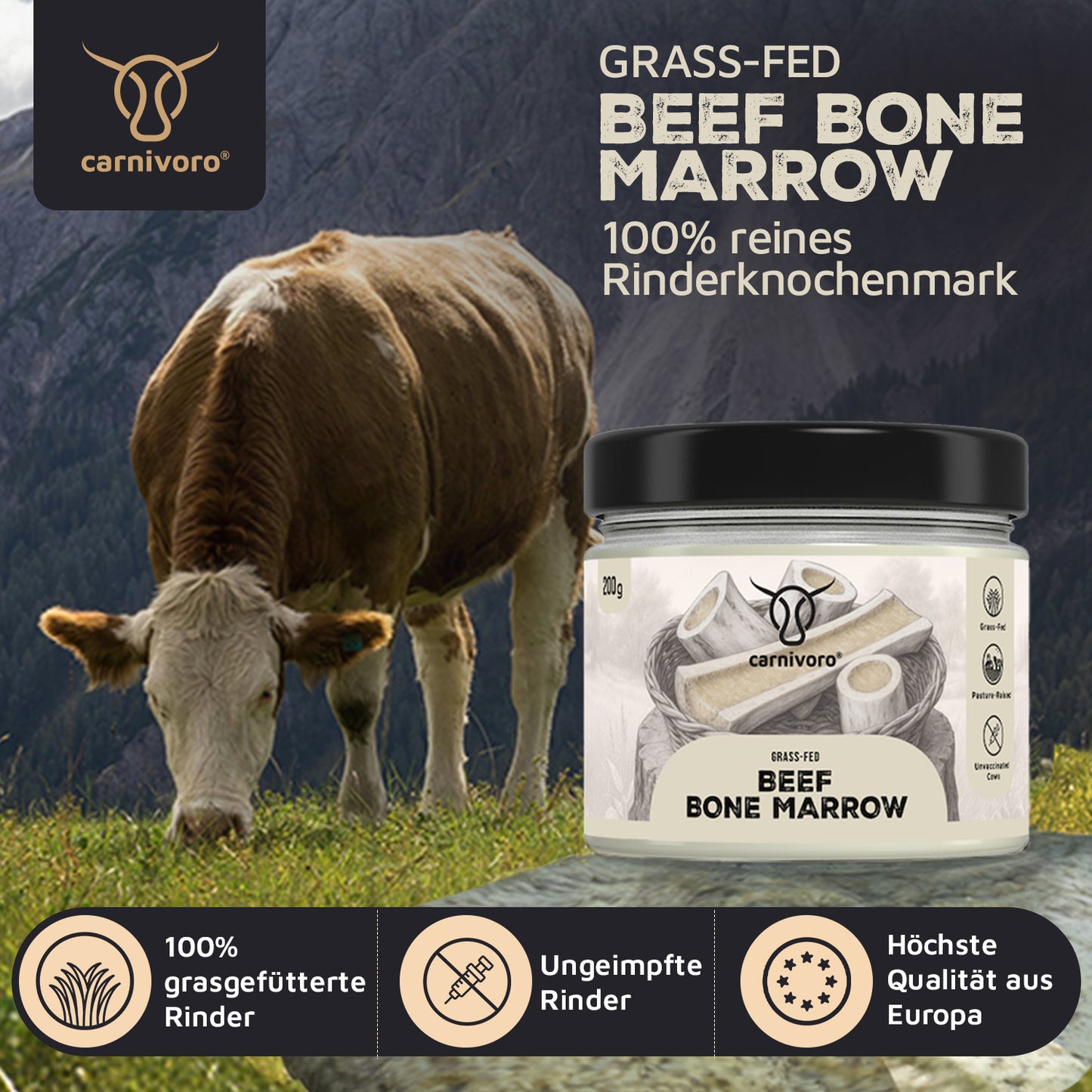
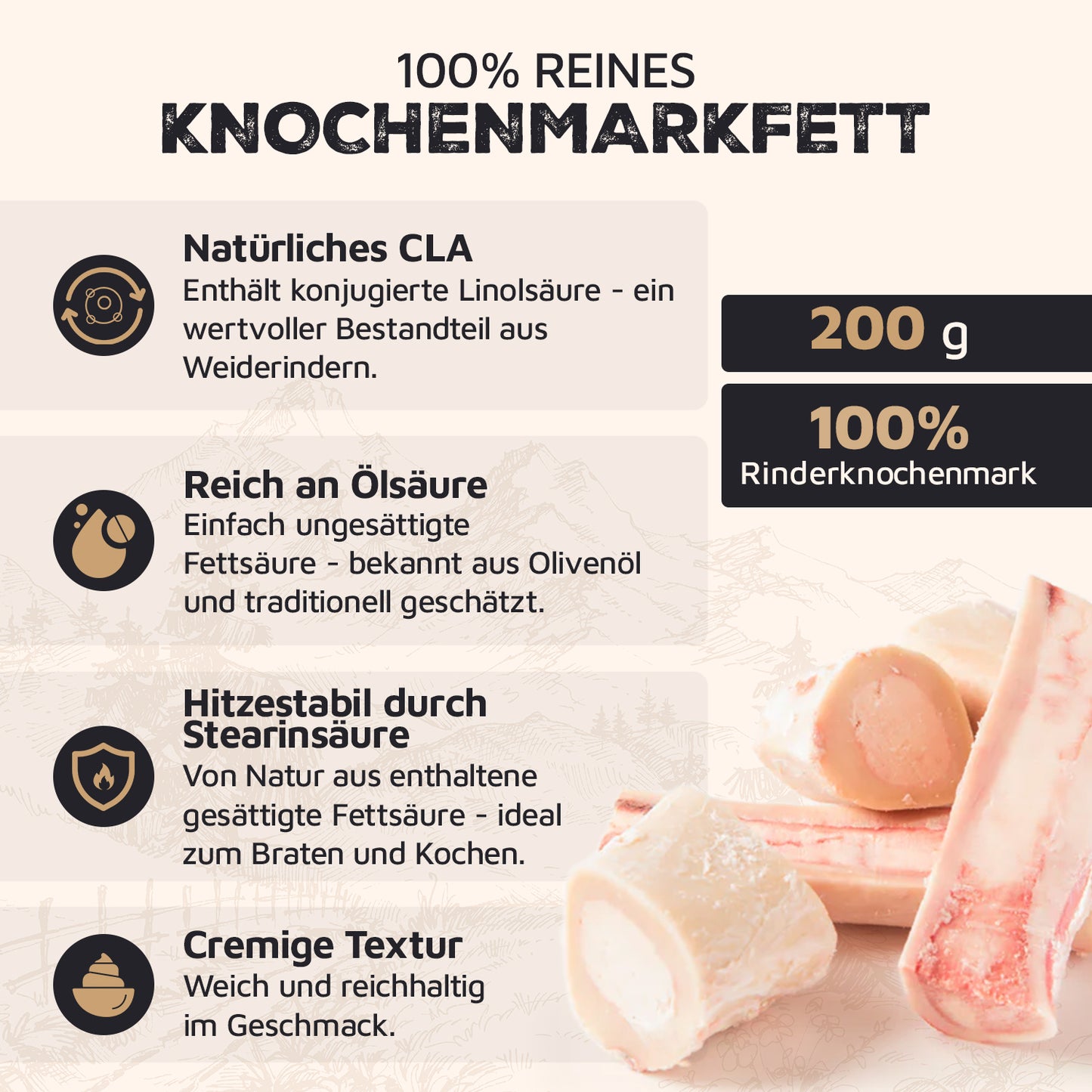
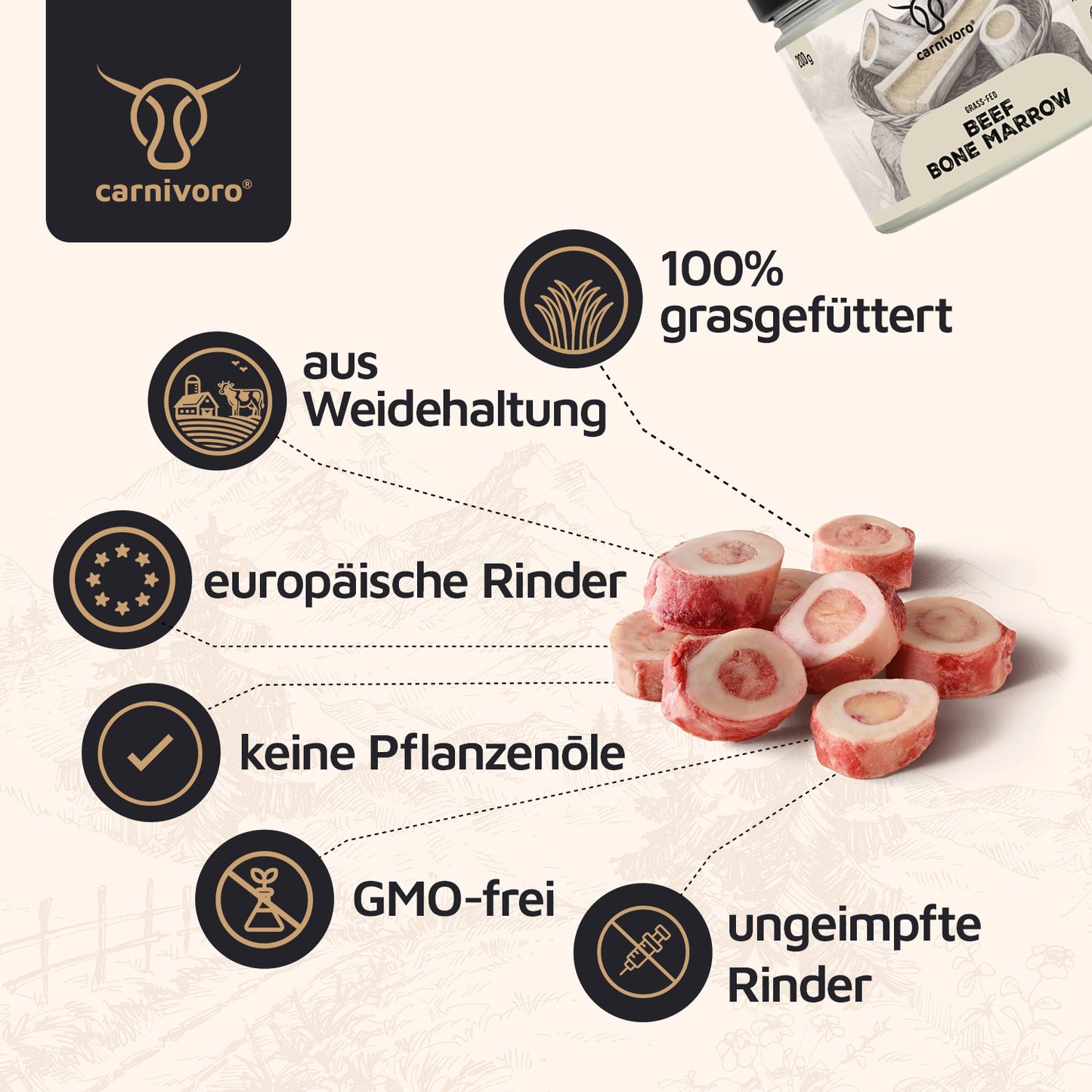


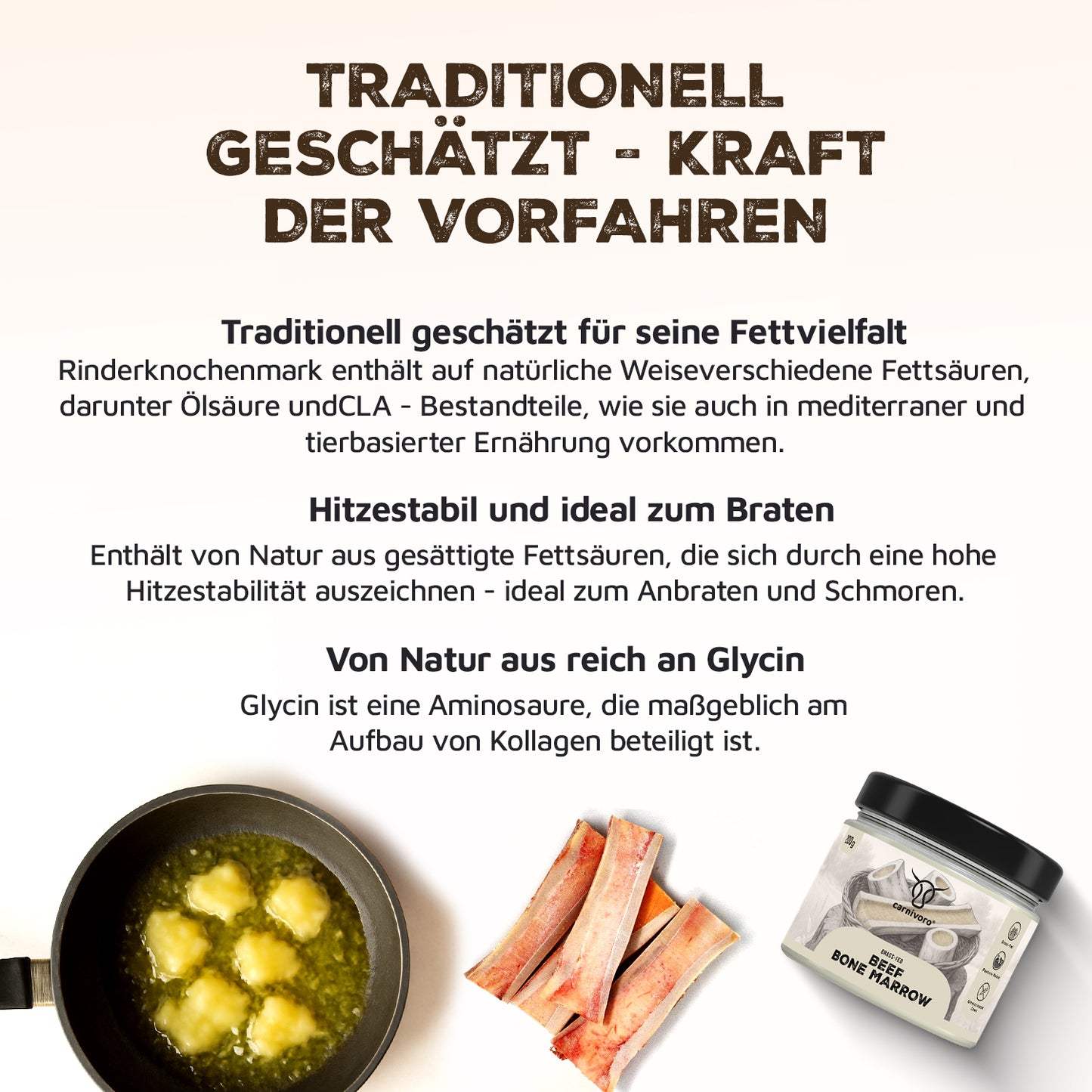
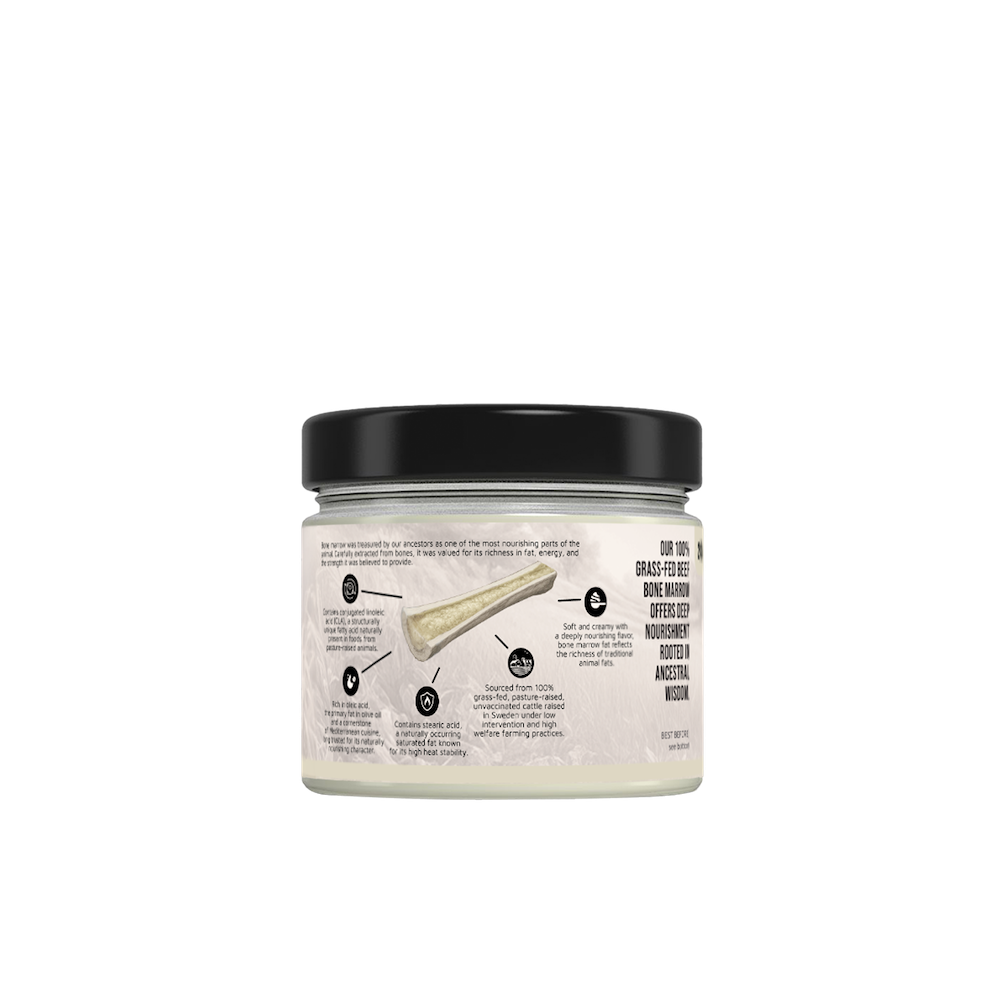
Collapsible content
Lagerung
Kühl und trocken lagern (am besten im Kühlschrank). Nach dem öffnen im Kühlschrank aufbewahren.
ingredients
100 % grasgefüttertes Rinderknochenmark
Shipping Information
3,99 €
Free shipping from 55,00 € (DE) from 150 € Europe-wide (EU)
contents
200 g grasgefüttertes Rinderknochenmark
Consumption recommendation
Einfach anstatt von Öl zum Braten oder Kochen
Frisches Knochenmark bekommt man nicht so oft. Deshalb genieße ich dieses Produkt. Es ist vielseitig verwendbar. Außerdem schätze ich die gute Qualität .

🦴 carnivoro Beef Bone Marrow – 100% Grass-Fed
Pure beef bone marrow from grass-fed, non-vaccinated pasture-raised cattle from Sweden – unprocessed, creamy, nutrient-rich.
🧬 Why bone marrow is so valuable
Bone marrow is one of the most nutrient-dense sources of animal origin. It not only provides high-quality fats but also contains essential building blocks for:
✔️ Joints, skin, connective tissue & regeneration
- Collagen & Glycine: Bone marrow contains naturally occurring collagen and particularly high levels of glycine, a structural amino acid.
🧪 Studies show that glycine:
- supports tissue regeneration [1]
- has anti-inflammatory effects [2]
- and even improves sleep quality [3]
- Glucosamine & Chondroitin: Natural components of bone marrow, central to cartilage and joint health.
🧪 Studies show:
- Glucosamine supports the cartilage formation and can alleviate joint discomfort [4]
- Chondroitin increases the water retention and elasticity of connective tissue [5]
🧈 High-quality, traditionally valued animal fats
Our bone marrow has an exceptional fat content of 100 g/100 g – ideal for ketogenic, Carnivore or animal-based diets.
🧪 Typical fatty acid composition (% share of total fat):
| Fatty acid | Share (%) |
|---|---|
| Oleic acid (C18:1) | 42 % |
| Palmitic acid (C16:0) | 23 % |
| Stearic acid (C18:0) | 17 % |
| Others (including CLA) | 9 % |
| Palmitoleic acid (C16:1) | 4 % |
| Linoleic acid (C18:2) | 3 % |
| Myristic acid (C14:0) | 2 % |
🥄 Usage
- Enjoy directly pure – e.g. spooned or spread frozen
- As a butter substitute on steak, meat, or vegetables
- For frying or for bone marrow butter
- Also popular as a natural face mask
📚 Sources
- McCarty, M. F. (2000). The therapeutic potential of glycine in preventing and treating disorders characterized by oxidative stress. Nutrition, 16(7-8), 704–706.
- Razak, M. A., et al. (2017). Multifunctional roles of glycine in metabolism, nutrition, and therapeutics. Scientific Reports, 7(1), 1421.
- Yamadera, W., et al. (2007). Glycine ingestion improves subjective sleep quality in human volunteers. Sleep and Biological Rhythms, 5(2), 126–131.
- Reginster, J. Y. (2007). Glucosamine and chondroitin sulfate as therapeutic agents for knee and hip osteoarthritis. Drugs & Aging, 24(7), 573–580.
- Hochberg, M. C., et al. (2016). Effect of Chondroitin Sulfate on Knee Osteoarthritis Progression. Annals of the Rheumatic Diseases, 75(2), 374–380.
Frequent Questions-FAQ









